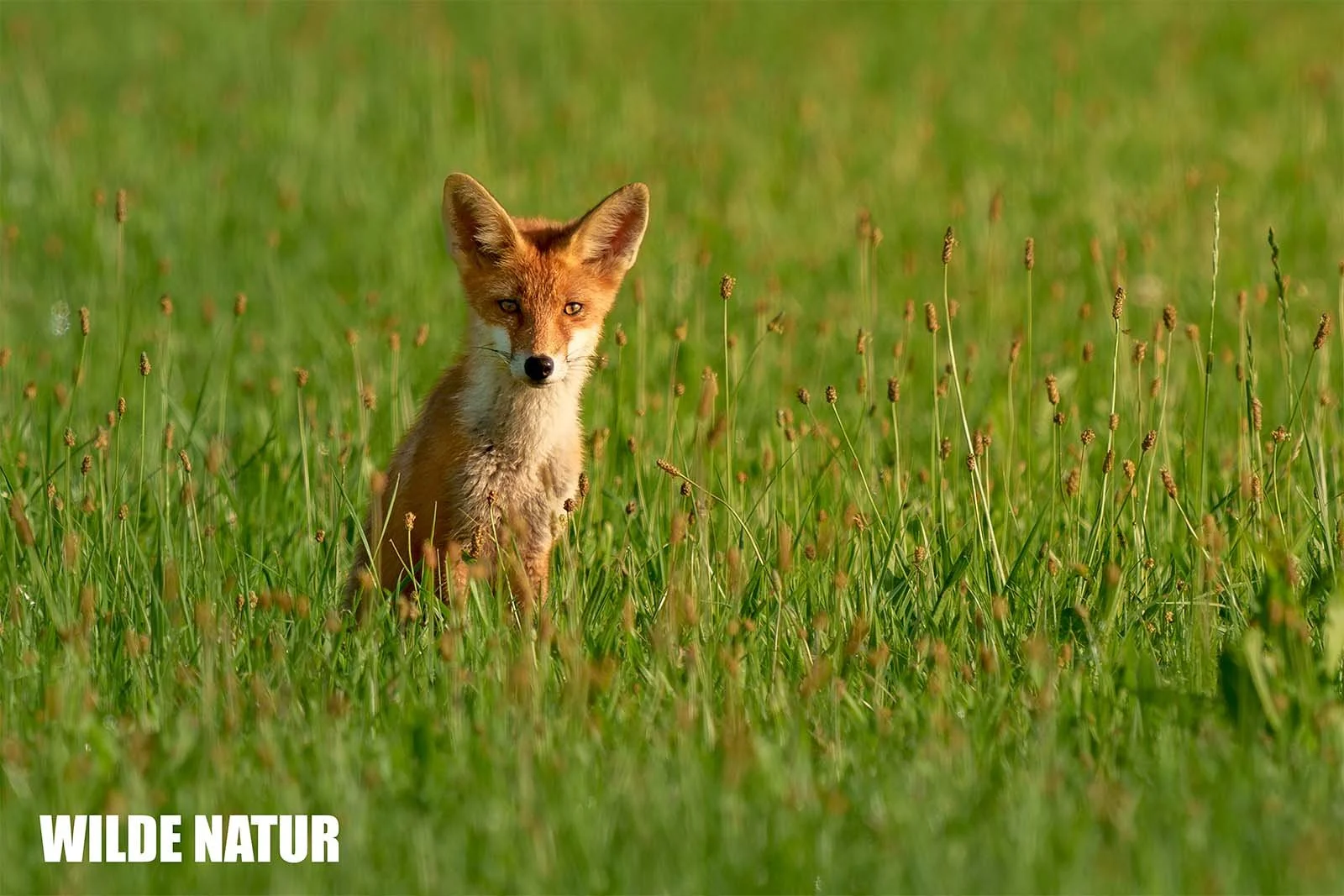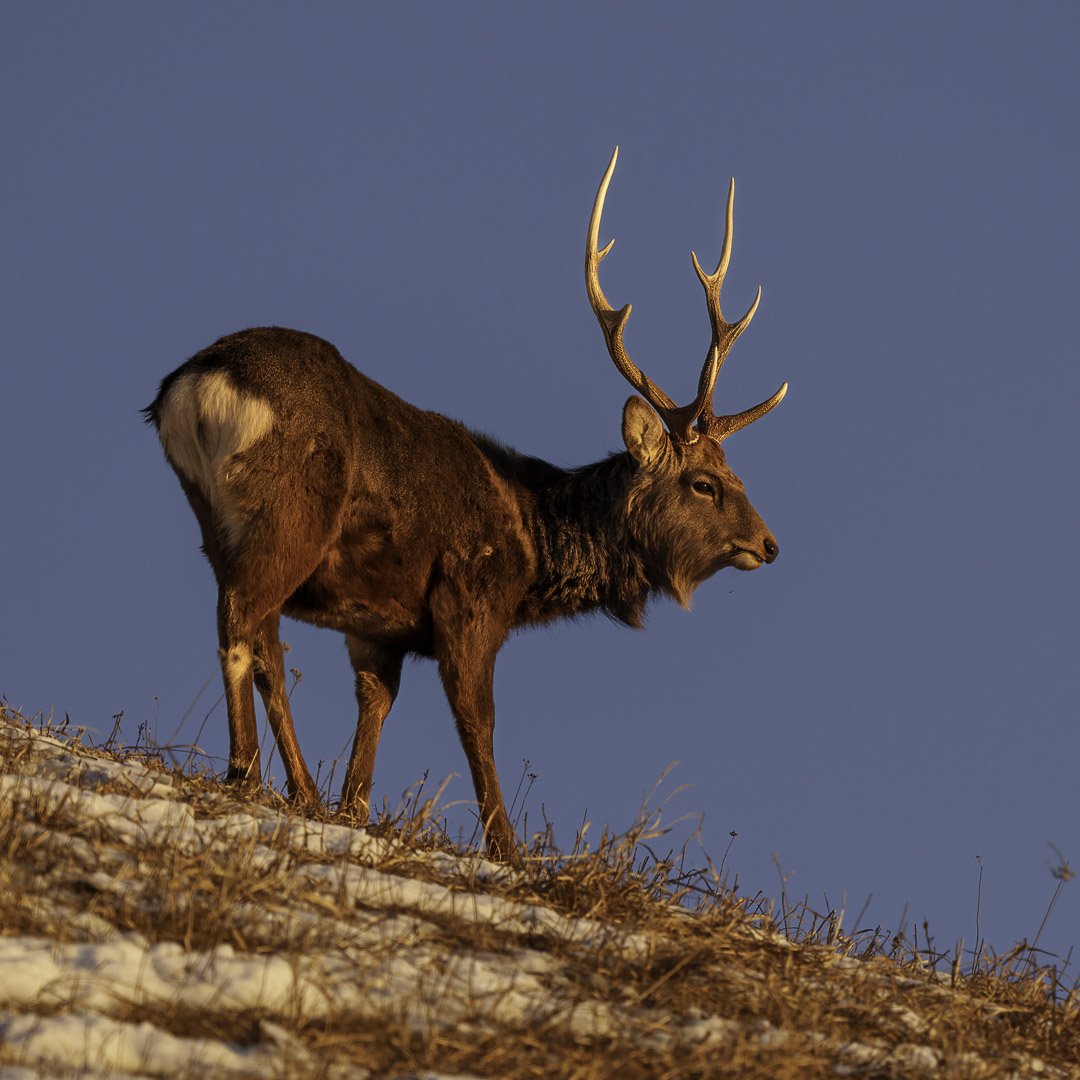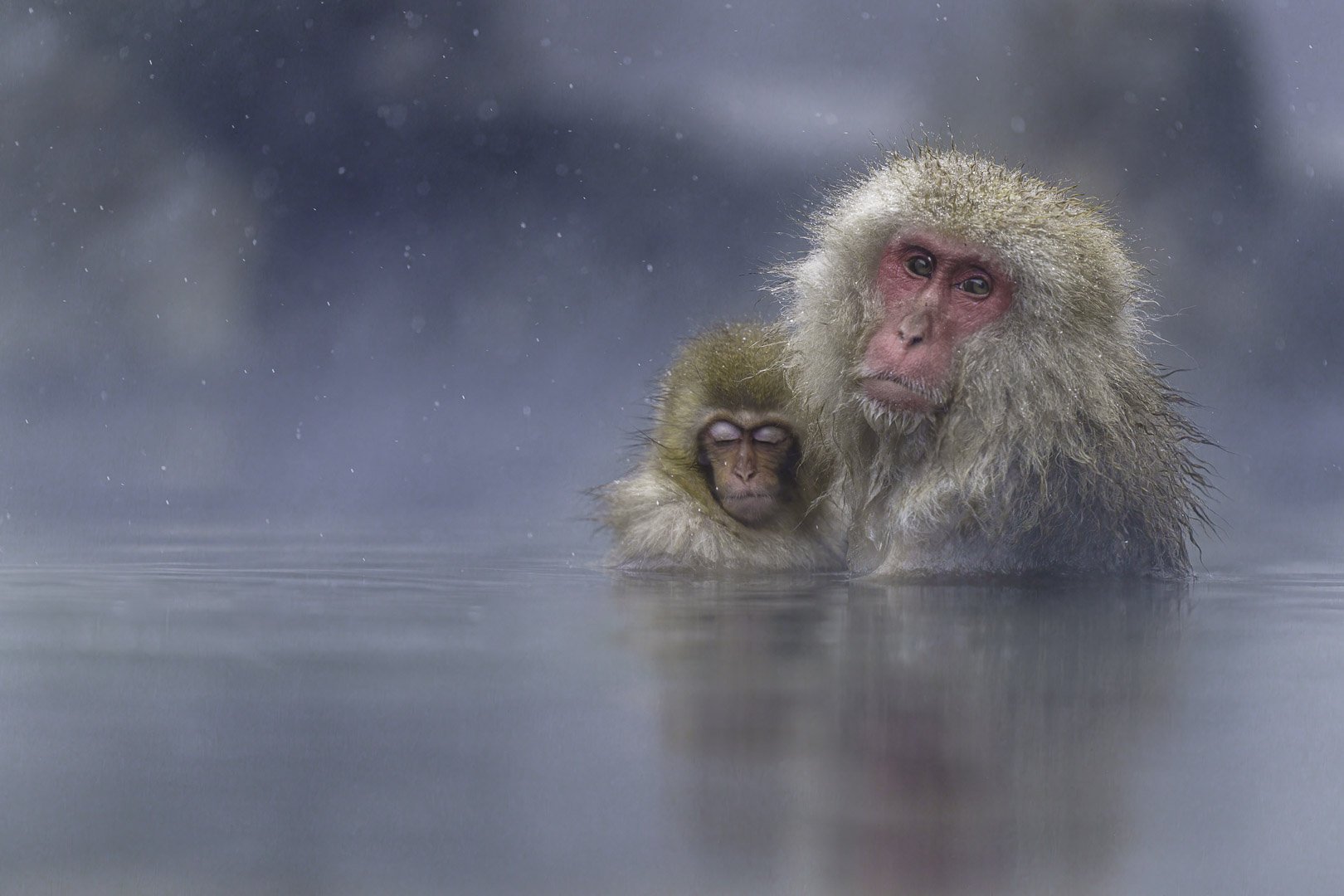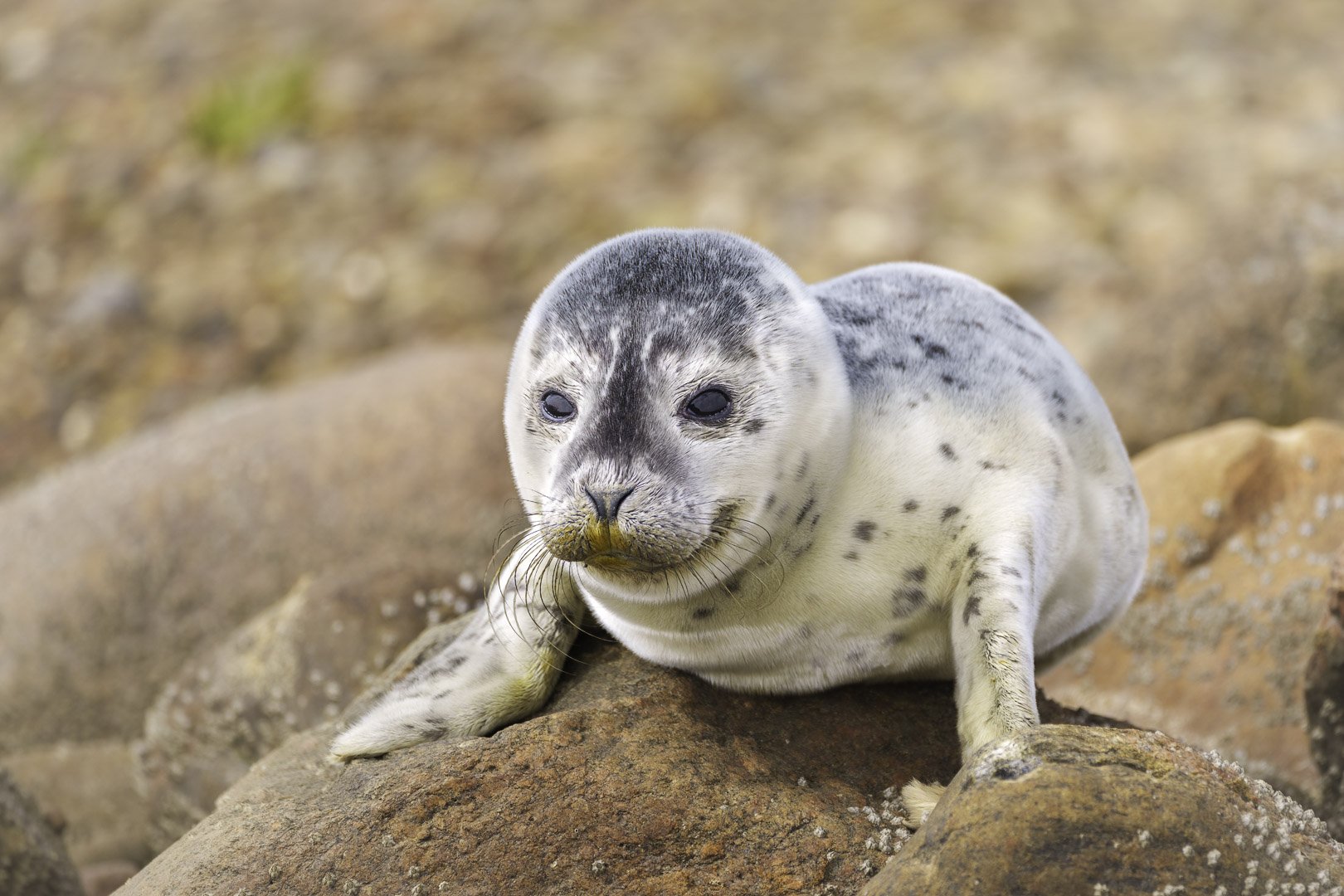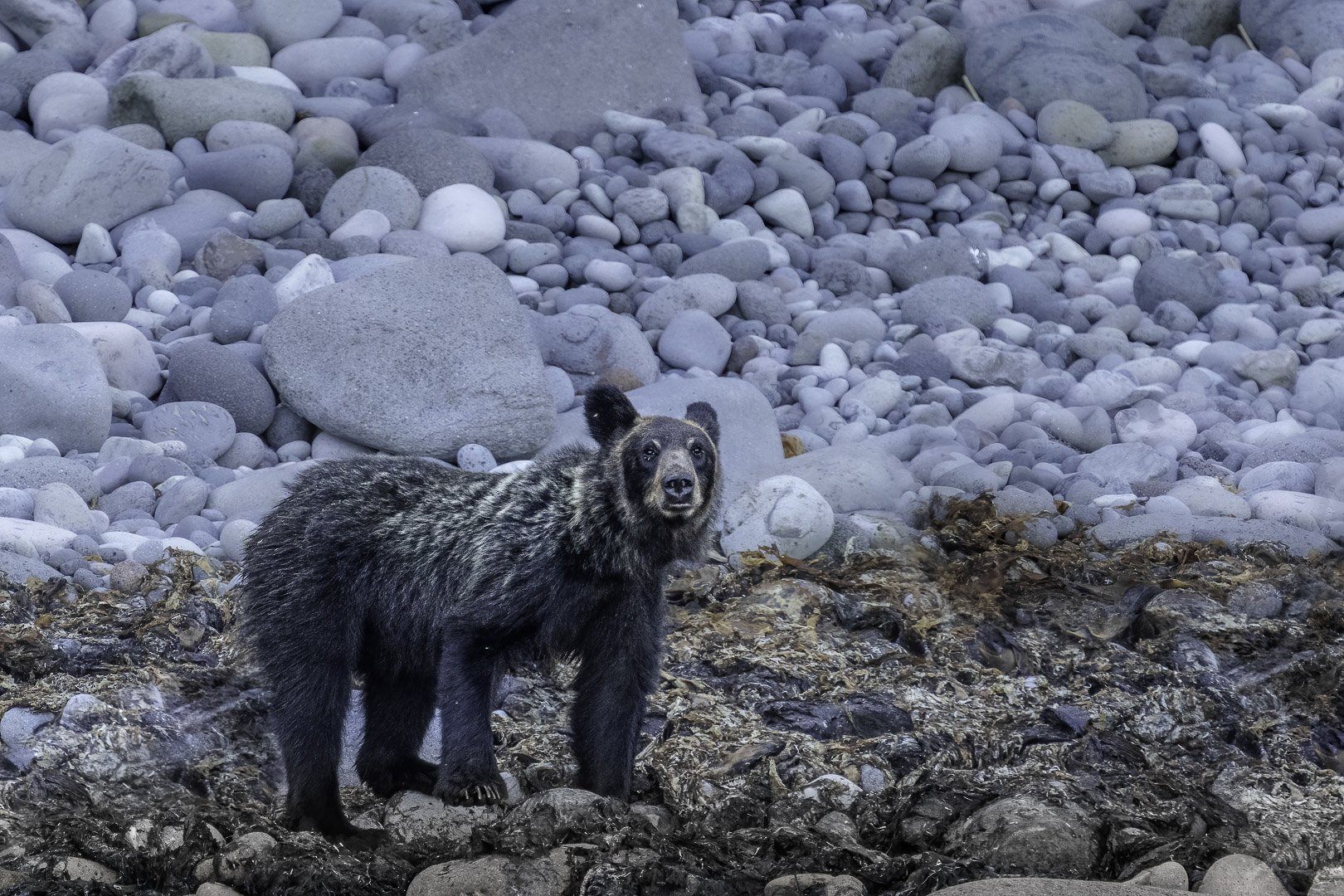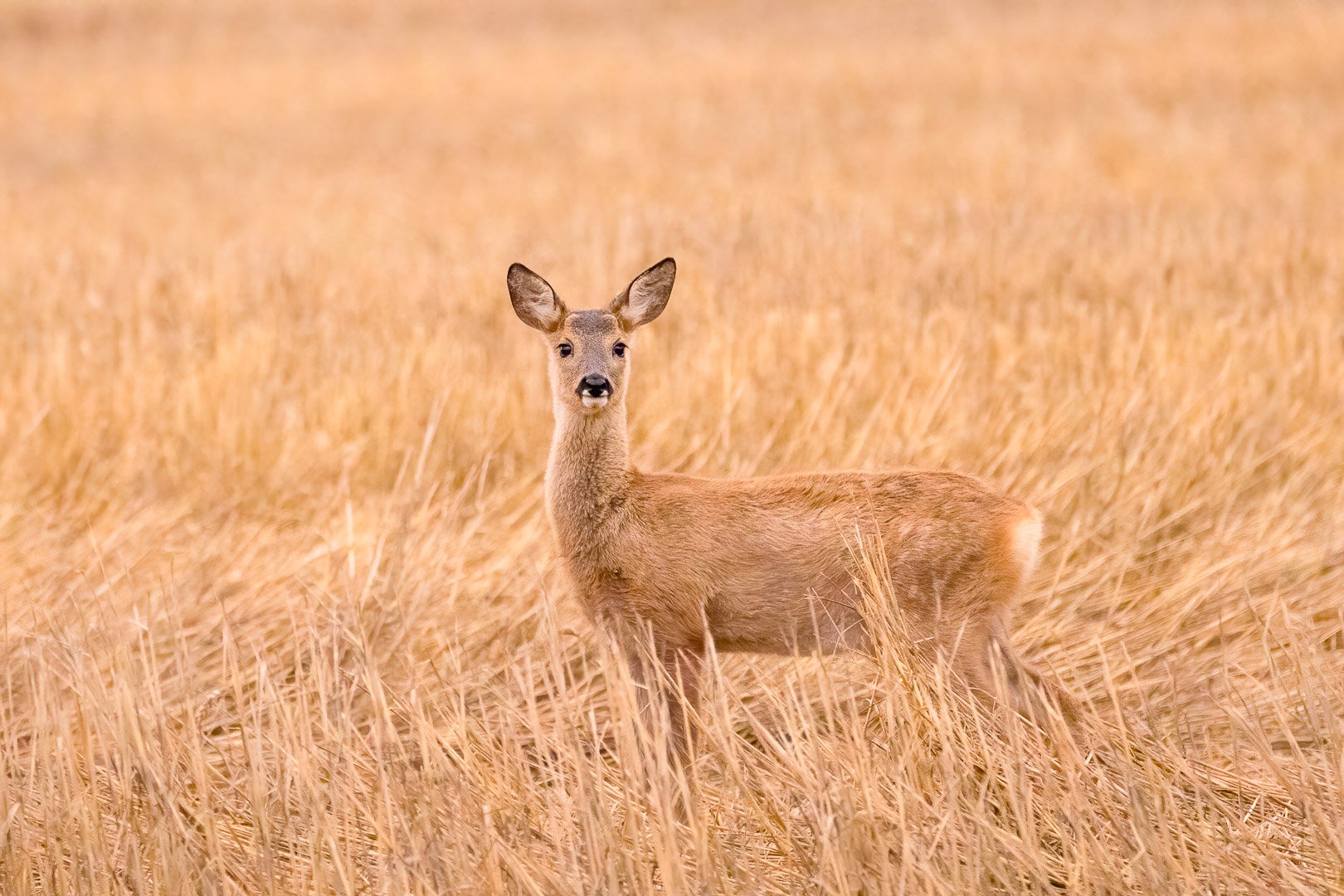European hare (Lepus europaeus)
European hare (Lepus europaeus)
European Hare – Fast Survivalist of the Fields
European hare first: Its long legs, quick zigzag maneuvers, and cleverness in survival make it a true master of the open landscape.
- As fast as a car: Up to 70 km/h in short distances
- Not to be confused with rabbits: Noticeably larger and more slender
- Extreme adaptation: Active even in the cold and well-camouflaged
- Mating with a trick: Superfetation – offspring in double sets
- Needs protection: Threatened by intensive agriculture
Key Facts
- Species Name: Lepus europaeus
- Size: Up to 70 cm long, up to 7 kg heavy
- Habitat: Open fields, meadows, light forests
- Diet: Strictly herbivorous with clever digestion
- Special Feature: Superfetation – simultaneous pregnancies possible
- Hibernation: None – hares are active year-round
- Threat Status: Red List – species is endangered in Germany
Table of Contents
- How to recognize the European hare
- Habitat: Where the hare hops
- What hares really eat
- Reproduction: Offspring with a system
- How the hare survives the winter
- Why the European hare needs protection
- Practical examples: How to experience the European hare
- FAQ: Frequently asked questions about the European hare
How to recognize the European hare
The European hare is not a rabbit, even though it is often confused with one. Its long hind legs are the first clear identifying feature. They act like oversized springs, enabling it to make breathtaking leaps and sharp turns.
Its fur is yellowish-gray to ochre-brown, slightly reddish on the sides, and the belly is almost white. Particularly striking are:
- The long ears with black tips
- The white tail with a black top – the so-called “flag”
In winter, the fur becomes denser and grayer, but never completely white. This allows the hare to blend perfectly into the landscape without being noticed.
Habitat: Where the hare hops
European hares need space and visibility. You can find them in:
- Fields
- Meadows
- Fallow land
- Light forests
They are solitary and lie flat on the ground during the day – in so-called forms. These depressions are their hiding places. There they remain still until danger approaches – then they take off in seconds and disappear in a zigzag pattern.
What hares really eat
European hares are strict herbivores. But: They choose selectively and have a particularly clever digestive strategy.
What’s on the menu:
- Fresh greens: Grasses, herbs, shoots
- Roots and tubers
- Bark, especially in winter
- Seeds and cereal grains
Hares use a special digestive technique called caecotrophy, where they re-ingest certain soft fecal pellets to efficiently extract additional nutrients. It may sound unappetizing, but it’s vital for survival.
Reproduction: Offspring with a system
European hares reproduce surprisingly efficiently. The mating season runs from January to October. During this time, a female hare can give birth up to four times – with one to five leverets each.
The trick: Superfetation
Remarkable is the ability of the female to be fertilized again during an existing pregnancy, allowing embryos of different ages to develop simultaneously.
The young are precocial. They are born with fur and open eyes – and are largely independent from day one.
How the hare survives the winter
The European hare does not hibernate. Even in snow, it remains active, but leaves its form less often and more cautiously.
Its winter strategies:
- Reduced activity to save energy
- Camouflage through thicker fur
- Diet shift to roots and bark
This means: Even in frost and snow, you need only look closely – hares are there, just well hidden.
Why the European hare needs protection
Modern agriculture with its large-scale monocultures and use of pesticides poses a significant threat to the European hare’s habitat.
Main problems:
- Monotonous fields instead of species-rich meadows
- Hedges and fallow land disappear
- Pesticides reduce the food supply
- Disturbances by machinery and humans
Therefore, the European hare is now considered endangered in Germany. Without targeted measures, it could disappear locally.
How to experience the European hare
1. Morning sprint on the meadow
In the first light of day everything seems calm – until a brown shadow races across the field in zigzag lines. The hare usually leaves its form at dawn to search for food. This is your best chance for a sighting.
2. Discovering forms
With a trained eye you can spot the shallow depressions in the ground where hares rest by day. Sometimes there is only a bit of loose fur inside – but that is a clear sign: one lives here.
3. Tracks in the snow
Even in winter, the hare gives itself away. Its large hind feet and the characteristic spacing of its hops are easy to spot in fresh snow – a true nature moment for early risers.
FAQ: Frequently asked questions about the European hare
Is the European hare the same as a wild rabbit?
No. The European hare is significantly larger, has longer legs, and lives above ground in forms rather than in burrows.
How many young does a European hare have?
Up to four litters per year, with one to five leverets each.
How old does a European hare get?
In the wild typically only one to four years, in exceptional cases even more.
Why is the European hare endangered?
Because of intensive agriculture, habitat loss, and pesticides.
Can you observe European hares?
Yes – best early in the morning or at dusk, with binoculars and patience.
It remains to be said
The European hare is not an animal that calls attention to itself by noise. But if you encounter one, you immediately recognize its uniqueness: elegance in movement, courage in flight, adaptation as a principle of life. It is a symbol of how much power can lie in silence—and how important it is to give even the quiet ones in nature a voice.







